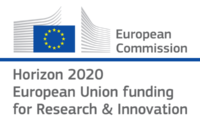It is well known that the Internet of Things (IoT) has been identified as one of the next big concepts to support societal changes and economic growth. To address this opportunity, the EU-funded project IoT-NGIN introduced novel research and innovation concepts to establish itself as the ‘engine’ that will fuel the next generation IoT.
Partners
IoT-NGIN (Next Generation IoT as part of Next Generation Internet) was a consortium of 19 partners from 8 countries across Europe (France, Italy, Germany, Spain, Greece, Luxemburg, Finland and Cyprus), led by Capgemini in France.

Objective
Internet of Things (IoT) is one of the next big concepts to support societal changes and economic growth, being one of the fastest growing ICT segments. A specific challenge is to leverage existing technology strengths to develop solutions that sustain the European industry and values.
To address this, IoT-NGIN introduced novel research and innovation concepts, to establish itself as the “IoT Engine” that will fuel the Next Generation of IoT as a part of the European Next Generation Internet.
First, IoT-NGIN uncovered a patterns based meta-architecture that encompasses evolving, legacy, and future IoT architectures.
Second, it optimised IoT/M2M and 5G/MCM communications, including using secure-by-design micro-services to extend the edge cloud paradigm.
Thirdly, it enabled user and self-aware, autonomous IoT systems through privacy-preserving federated ML and ambient intelligence, with AR support for humans.
Finally, IoT-NGIN researched towards distributed IoT cybersecurity and privacy, for example, using Self-Sovereign Identities and interconnected DLTs to implement Meta-Level Digital Twins.

IoT-NGIN was validated via more than 30 types of heterogeneous IoT devices, ranging from tiny resource constrained IoT sensors to intelligent, autonomous buses, drones and robots, deployed in one of the most prestigious IoT/5G lab (OneLab) and five Living Labs: the “Twin Cities” Living Lab in Helsinki/Tallinn, a fully customizable Smart Agri Living Lab in Greece, the BOSCH and the ABB employee-friendly Industry 4.0 facilities in Barcelona and Helsinki, and a hybrid field-lab facility focused on Smart Energy, interconnecting Terni City and EDD Eurolab in Aachen.
Beyond the partners exploitation plans, to maximize impact and sustainability, IoT-NGIN pushed all results via alliances, clusters, SDOs and DIHs, including FIWARE, BDVA, and AIOTI, offer developed software as open source, and organize open Open Calls to engage FGPA/ASIC/fabless and IoT application developers
Follow the project:
Project page https://iot-ngin.eu/
Twitter https://twitter.com/IotNgin
Linkedin https://www.linkedin.com/company/iot-ngin/
Facebook https://m.facebook.com/IotNgin/
The role of Forum Virium Helsinki
Forum Virium Helsinki was responsible for the lead role in IoT-NGIN Living Labs Validation & 3rd Party Support including in 5 Living Labs (Helsinki/Tallinn, Barcelona, Peloponnese, Paglia, Helsinki) and Validating IoT-NGIN through Smart City use case adaptation and validation in FinEst Twin Smart City Trial #2 Human-Centred Twin Smart Cities Living Lab by three application demonstrations: Traffic Flow Prediction & Parking Prediction, Crowd management and Co-commuting solutions based on social networks hosted at the Jätkäsaari Mobility Living Lab. Forum Virium also used the project outcomes to expand their services in other smart cities utilities, with upper goal to maximize the business value and prospects.
Benefits for Helsinki
The IoT-NGIN project strengthened the building of Helsinki’s ecosystem towards Next Generation IoT as part of Next Generation Internet. IoT-NGIN aimed to drive IoT to the next generation through scalability, openness, security and support for monetisation. The four IoT-NGIN keywords mean:
Scalability: Instead of integration, we chose secured-by-design federation as IoT-NGIN’s approach, keeping siloed IoT platforms internally intact and data localised. We offered (standalone) 5G optimization for IoT and a secure edge cloud micro-services platform to ensure scalability by design.
Openness: From the business point of view, anyone can join an open system, as there are no gatekeepers. At the technical level, virtually any IoT platform can be joined to the federation, provided that it has some open interfaces. From IoT-NGIN view, this was achieved by utilizing innovative Self-Sovereign Identities (SSI), separating technical participation from trust anchors and business relationships.
Security: We researched towards “security by design”, introducing inter-DLT traceability and attested novel DLT-based Meta-Level Digital Twins (MLDT) at the edge clouds. We built new security and privacy features to offer better protection against cyber-attacks and give all the stakeholders better control of their data.
Monetisation: Based on data sovereignty, within IoT-NGIN, data was shared in a controlled way, within the bounds of security and privacy policies defined by the stakeholders of the data. While strongly coupled with security, regulation and legal constraints, this aspect has characteristics, which go well beyond traditional smart contracts, for example, to introduce innovative contractual perspectives for commons-like data sharing.

